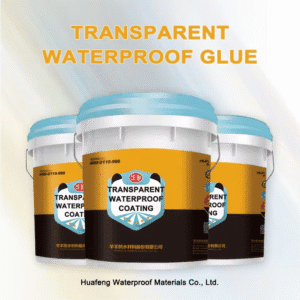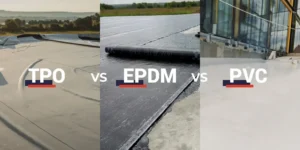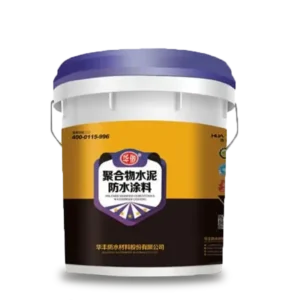The key to waterproofing and leak prevention lies in the combination of “prevention” and “blocking.” Prevention is better than cure. Properly waterproofing during the initial renovation phase can significantly reduce the likelihood of leaks later in the renovation process. Below, we’ll detail waterproofing and leak prevention methods, focusing on waterproofing material selection and addressing common leak sites.
Ⅰ. Waterproofing Material Selection and Application
There are numerous waterproofing materials on the market, each with its own unique performance characteristics. Selection should be tailored to the specific application location and environmental characteristics. Common waterproofing materials include:
1. Polymer cement-based waterproofing coating: This type of material is easy to apply, environmentally friendly, non-toxic, and has strong adhesion. It is suitable for waterproofing indoor areas such as bathrooms and kitchens. Application typically requires two to three coats, with a 4-8 hour interval between coats. This material has already been discussed in the “What Materials to Use for Wall Waterproofing” section.
2. Polyurethane waterproofing coating: It offers excellent elasticity and weather resistance, making it particularly suitable for areas subject to large temperature fluctuations, such as balconies and roofs. It comes in two or two component versions. The two-component version requires on-site mixing but offers more stable performance.
Polyurethane waterproof coating
3. Waterproof membrane: including SBS modified asphalt membrane, APP modified asphalt membrane, polymer waterproof membrane, etc. Suitable for large-scale construction, such as basements, roofs, etc. Professional blowtorch baking and paving technology are required during construction.
4. Waterproof mortar: Made of cement, sand and waterproofing agent in a specific proportion, it is often used for moisture-proof treatment of walls. It is easy to construct and has low cost, but poor elasticity.
5. Leakage plugging agent: For existing leakage points, commonly used ones include fast leak plugging agent, grouting plugging material, etc. These materials swell or react chemically when exposed to water, and can quickly seal the leakage channel.
II. Common leakage locations and treatment methods
1. Bathroom leakage
The bathroom is the area in the house most prone to leakage problems. The main leakage points include:
(1) Leakage around the floor drain: usually caused by damage to the waterproof layer or improper installation of the floor drain. Treatment method: Remove the tiles around the floor drain, clean the base layer and apply waterproof coating, focusing on the joints between the pipe and the floor slab, then reinstall the floor drain and seal it properly.
(2) Wall seepage: It often occurs on the wall of the shower area, manifested as water stains on the wall of the adjacent room. Solution: Remove the original tiles and waterproof layer, reapply a 1.8-meter-high waterproof layer, and pay special attention to the treatment of the corners and around the pipes.
Bathroom waterproofing construction
(3) Leakage at the bottom of the caisson-type bathroom: It is necessary to open the caisson for inspection, clean up the accumulated water and find the leakage point, reapply the waterproof layer and set up a secondary drainage system.
2. Balcony leakage
Main manifestations of balcony leakage: Rainwater flows back or ground water seeps into the downstairs.
(1)Check whether the floor drain is unobstructed and whether the drainage slope meets the standard (generally no less than 2%).
(2) A waterproof anti-slope should be made at the balcony threshold, with a height of not less than 5 cm.
(3)Apply a weather-resistant polyurethane waterproof coating for open balconies, extending the coating up the wall to a height of 30 cm.
3. Roof leakage
Roof leakage is one of the most difficult waterproofing problems to deal with. Common treatment methods are:
(1) Local repair: For obvious cracks or damage, you can first clean the base layer, then use waterproof mortar or leak-proof agent to repair, and then apply waterproof coating on the entire surface.
(2) Overall renovation: When the roof waterproof layer is aged on a large area, it is necessary to completely remove the old waterproof layer, re-lay the waterproof membrane or apply waterproof coating. Pay attention to the treatment of detailed nodes such as parapets, gutters, and roof pipes.
(3) For joint leakage of prefabricated board roofs, high-pressure grouting can be used to seal the leak.
4. Basement leakage
Basement leakage is mainly caused by external water pressure and is difficult to deal with. Common methods:
(1) Internal waterproofing: Apply penetrating crystalline waterproof coating to the interior walls. This material can penetrate into the concrete to form crystals that block the pores.
(2) Grouting and plugging: For water seepage in cracks, drill holes and inject polyurethane grouting material to form an elastic water stop.
(3) Drainage and pressure reduction: Set up a water collection well and drainage system to lower the groundwater level and reduce water pressure. This is involved in the tunnel waterproofing and plugging method.
Waterproofing and plugging is a systematic project that requires scientific material selection, standardized construction and careful maintenance. When renovating, owners should pay attention to waterproofing projects and choose qualified construction teams; for leakage problems that have already occurred, the cause should be identified and the right remedy should be prescribed. Only by combining scientific methods with a serious attitude can we truly solve the problem of house leakage and create a safe and comfortable living environment.






